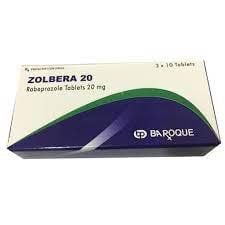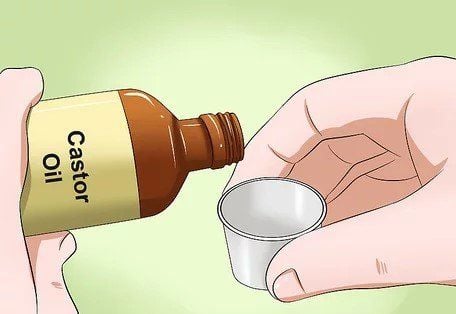This is an automatically translated article.
The article was professionally consulted by Pharmacist Nguyen Thi Linh - Faculty of Pharmacy - Vinmec Danang International General Hospital.Pantoprazole is a proton pump inhibitor (PPIs), used in the treatment of stomach and esophageal problems by reducing the amount of acid in your stomach.
1. What are the effects of Pantoprazole?
Pantoprazol is a proton pump inhibitor (enzyme H + / K + - ATPase ) found on the surface of gastric parietal cells, preventing acid secretion into the gastric lumen. Therefore, pantoprazole has an inhibitory effect on gastric acid secretion even when the stomach is stimulated by any stimulant.2. Indications of Pantoprazole
Peptic ulcer . Gastroesophageal reflux . In combination with appropriate antibiotics in the treatment regimens of peptic ulcers caused by Helicobacter pylori. Prophylaxis of gastric and duodenal ulcers caused by the use of NSAIDs (non-steroidal anti-inflammatory drugs) Pathologically increased acid secretion in Zollinger-Ellison syndrome.

Chỉ định sử dụng Pantoprazole trong việc điều trị bệnh loét dạ dày
3. Dosage and how to take pantoprazole
Dosage:
Gastroesophageal reflux: 20-40 mg, 1 time / day in the morning for 4 weeks, can be increased to 8 weeks as needed. Treatment may be extended up to 16 weeks in people with esophageal ulcers that do not heal after 8 weeks of treatment. Maintenance therapy: 20-40 mg per day. Benign gastric ulcer: 40mg/day, for 4 to 8 weeks. Duodenal ulcer: 40 mg/day, for 2 to 4 weeks Treatment of peptic ulcer caused by Helicobacter pylori: combination of pantoprazol with antibiotics according to the regimen with the dose regimen of Pantoprazol 40mg, twice daily (morning and evening) Prophylaxis of gastrointestinal ulcers caused by non-steroidal anti-inflammatory drugs: 20mg/day. Zollinger-Ellison syndrome (pathological hypersecretion of acid): Start dose at 80mg/day, then adjust according to patient's response For patients with liver failure: Usually no need to adjust dose but do not use more than 40mg/day For patients with renal impairment: No dose adjustment is usually required. How to use:
The drug is to be swallowed whole, do not break, chew or break the tablet.
Should take the medicine about 30-60 minutes before eating.
It is necessary to adhere to the full medication regimen for the entire course of treatment.
4. Undesirable effects of the drug Pantoprazole
Common side effects when using Pantoprazole:
Body as a whole: Fatigue, dizziness, headache. Skin: Skin rash, urticaria Gastrointestinal: Dry mouth, nausea, vomiting, flatulence, abdominal pain, constipation, diarrhea. Musculoskeletal: Muscle pain, joint pain. In addition, some less common side effects may be such as weakness, dizziness, insomnia, itchy skin, increased liver enzymes.

Có thể bị đau đầu khi sử dụng thuốc Pantoprazole
5. Contraindications of Pantoprazole
Patients with hypersensitivity to any component of the drug or other benzimidazole derivatives (e.g. esomeprazole, lansoprazole, omeprazole, rabeprazole).6. Be careful when using Pantoprazole
When the drug is stopped abruptly, it may cause rebound acidosis. Before taking pantoprazole, the possibility of gastric cancer must be excluded because the drug may mask symptoms or delay the diagnosis of cancer. Pantoprazole should be used with caution in patients with acute and chronic liver disease or a history of liver disease. Be careful in people with kidney failure, the elderly. Pregnancy: There are no adequate studies with the use of pantoprazole in pregnant women. However, animal studies have demonstrated that pantoprazole crosses the placental barrier; however, no teratogenic effects have been observed. Doses of 15 mg/kg slow fetal bone growth. Lactation: Pantoprazole is excreted in human milk. The use of drugs should weigh the benefits and risks. To register for examination and treatment at Vinmec International General Hospital, you can contact Vinmec Health System nationwide, or register online HERE.













